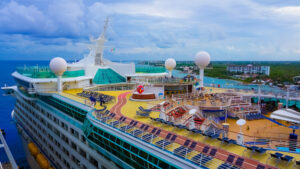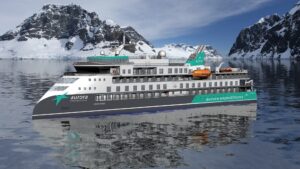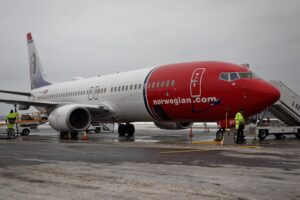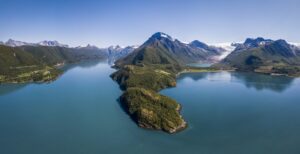Norway
Explore Norway’s vibrant beauty under the dazzling northern lights, or go on an outdoor adventure where the sun never sinks below the horizon.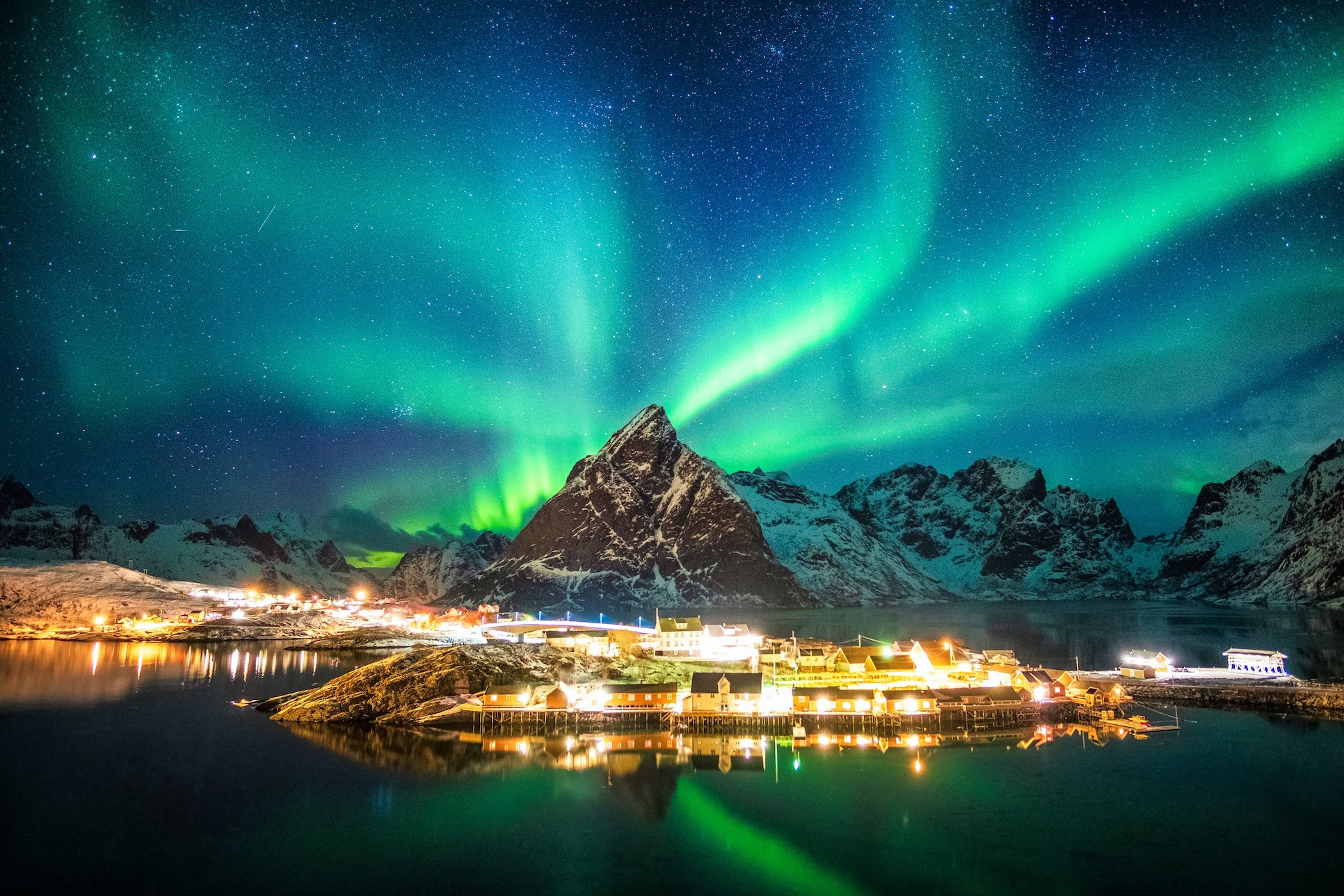
Resting at Europe’s northernmost point, Norway is a land of natural, undeniable beauty. Roughly two-thirds of the country is mountainous, making it a rarity on the European continent. Snow-capped mountains and serpentine fjords highlight its landscape. Across the country, there are major variances in weather and temperatures. When traveling from east to west, even the seasons don’t appear in the same way.
Winters along the coast are mild, featuring light snow, while summers are cool and pleasant. In the interior, where the capital, Oslo, is located, winters are bitterly cold and snowy. The summers are hot and dry, particularly in the east.
Norway is a haven for outdoor enthusiasts. Skiing, hiking through picturesque forests and up snow-capped mountains, cycling, and kayaking are just a few of the activities available.
The midnight sun and the northern lights are two natural phenomena that can be seen in Norway. Also, exploring the Norwegian culinary scene can be such a delight. You can sample dishes made from the freshest fish and game or indulge in seasonal fruits and vegetables.
Most Norwegians live in the country’s extreme south, where Oslo, the capital, is located.
A substantial portion of the population belongs to the Evangelical Lutheran Church and speaks Norwegian, which has many dialects.
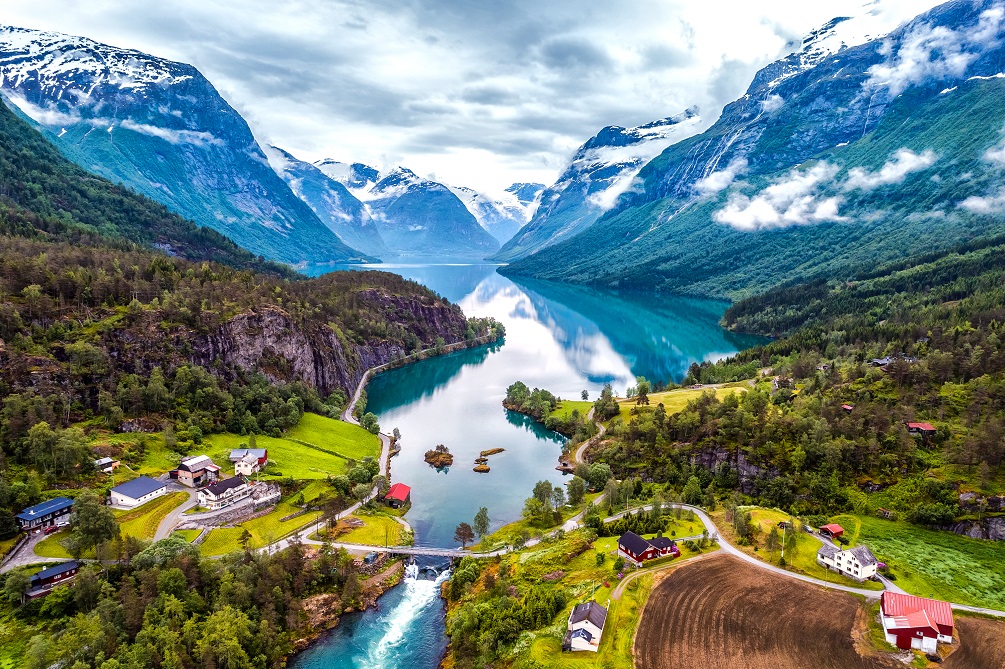


Norway is in Northern Europe and shares land boundaries to the east with Sweden, Finland, and Russia.
Several bodies of water flank Norway, including the Skagerrak to the south, the Norwegian Sea and the North Sea to the west, and the Barents Sea to the north.
Mainland Norway occupies the western and northernmost point of the Scandinavian Peninsula, which Sweden, Finland, and Russia also share.
The Norwegian arctic island of Jan Mayen and the archipelago of Svalbard form part of Norway.
Also, Norway has three dependent territories: the uninhabited volcanic Peter I Island in the Bellingshausen Sea, the Bouvet Island in the South Atlantic Ocean, and a section of Antarctica known as Queen Maud Land.
Most of Norway’s terrain is mountainous, with U-shaped submerged fjords, deep trenches carved into the soil millennia ago by retreating glaciers. The fjords occupy the western coast of the country, creating a magnificent view.
Between Norway and Sweden lie the Scandinavian mountains, which span most of the border.
There are many glaciers, over 400 thousand lakes, and over 200 thousand registered islands in Norway.



Compared to other places like Alaska and Greenland, Norway’s climate is mild.
The climate varies by region, ranging from marine to subarctic. The capital, Oslo, has a continental climate.
Summers are pleasant, with temperatures reaching 25 to 30 °C (77 to 80 °F) in some places from late May to early June. The water temperature is above 18 °C. In addition, there is low humidity during this time of year.
The ideal time to see Norway’s midnight sun, a natural phenomenon where the sun doesn’t set for several weeks is during the summer. Northern Norway is the place to go between May and July to witness this event.
Summer is also ideal for cycling, hiking, and camping.
During the autumn months of September to November, the summer heat gradually dissipates in the inland areas. Summer’s delightful warmth may last long into October, yet winter may arrive at this time as well.
Autumn is the best time to visit Norway for cultural experiences and mountain and forest hikes amongst the vibrant colours of nature.
Winter in Norway lasts from December through February, though it may come earlier in some areas. The sun rarely rises above the horizon in the north, and the rest of the country has extremely short daylight hours.
Winter weather and temperatures vary significantly across the country, with the average temperature set at -6.8 °C (20 °F).
It can get chilly and windy in the interior regions and the lower inland parts. Snowfall and heavy frost are common, and temperatures drop well below freezing, reaching -20 °C (-4 °F) in extreme cases.
The winter climate is much milder along the coast, with temperatures usually around 0 °C (32 °F). But it can still be snowy and cold in some parts.
Winter is the ideal season to bask in the gentleness of fjords flanked by snow-capped mountains. You should visit Norway between October and March to see the northern lights.
The weather during the spring months of March through May is unpredictable, fluctuating from warm to chilly.
Spring arrives later in the north than the south, painting Norway’s landscape with serene blooming flowers. And the snow melting on the mountains floods lakes and rivers and creates natural waterfalls.



Norwegian cuisine reflects the country’s environment. From fish dishes, like torsk (cod), to dairy products, like geitost (a sweet semi-hard cheese made from cow or goat’s milk).
Staples of Norwegian cuisine include fresh fish, game meat, and seasonal vegetables.
Every season in Norway brings with it a different cuisine.
In spring, lamb, asparagus, garlic, and fresh fish are popular, while close to summer, rhubarb becomes the star component in many kitchens.
Summer is the season for fresh fruits like strawberries, blueberries, and cherries.
During this season, some typical dishes you must try will comprise fresh fish. Mackerel served with sour cream, potatoes, and cucumber salad is one of the most popular.
Fresh shrimp with white bread, mayonnaise and white wine, cured pork, and mutton with sour cream and flatbread are also popular.
Autumn brings berries, game, and mushrooms.
The quality and flavor of seafood, such as blue mussels, langoustine, lobster, and scallop, are at their best in winter.
There are plenty of Norwegian dishes that deserve a try, like smalahove (sheep’s head), lutefisk (dried whitefish pickled in lye), and pinnekjøtt (dried, salted and steamed lamb ribs).
Vaffel is a popular delicacy in Norway that resembles Belgian waffles, but differs in taste and consistency.
It can be eaten with a mixture, or a separate portion, of strawberry or raspberry jam, sour cream, butter and sugar, and brown cheese.



Since the weather varies significantly across the country, deciding what to wear in Norway can be tricky. On top of the weather, you should also factor in the activities you plan to do.
Here are some tips for what to pack and wear per season:
- Summer: You can dress as you please during this season, but if you’re heading out to sea or hiking in the mountains, woolen, waterproof and windproof garments are best.
- Autumn: Rather than a single thick sweater, wear multiple thin layers of wool. Wool garments are recommended over cotton. Also, since it’s difficult to predict what the weather will be like every day, bring rain- and windproof clothes.
- Winter: Dress in warm layers. Bring along wool garments and waterproof and windproof clothes. If you plan to do many outdoor activities, a heavy jacket, snow pants, thermal underwear, and boots with a thick sole are best.
- Spring: Dress in layers to protect yourself from the heat, rain, and snow. Pack woolen clothes, warm shoes, and a raincoat.



The Norwegian Krone (NOK) is the official currency of Norway, with one Norwegian Krone subdivided into 100 øre.
Banknotes come in quantities of 50, 100, 200, 500, and 1000 Norwegian Krone. And coins in denominations of 50 øre and 1, 5, 10, and 20 Norwegian Krone.
Most banks near tourist information centers will exchange your money for the local currency. In some regions, you may only be able to change money at a post office for a fee of up to 6 pounds.
ATMs (or locally, mini banks) can be found near banks and at shopping centers and train stations. Most major credit cards can be used to make withdrawals. And as for debit cards, you can use yours if it’s Cirrus, Visa Electron, or Plus.
Visa and MasterCard are some of the most widely accepted debit and credit cards.
You can use your debit or credit card to make purchases or buy tickets for domestic ferries or trains.
Bear in mind that your card may not always be accepted, so be sure to ask first.



Norway’s official and primary language is Norwegian, a Germanic language.
There are several dialects of Norwegian spoken in the country and there are two forms of the language: Bokmål (Book language) and Nynorsk (New Norwegian).
Bokmål is more common around Oslo and the eastern Norwegian lowland. And Nynorsk is spoken along the coast and in the mountainous interior.
In the northern parts of Norway, about 15 thousand residents’ first language is North Sami. It’s a Uralic language that has official status in some districts.
While English is the second language of most educated Norwegians, understanding basic Norwegian vocabulary and terms can make exploring the country even more enjoyable.
Here are some common Norwegian words and phrases to get you started:
- Hello – Hallo
- Bye – Ha det
- Good morning/afternoon/evening – God morgen/ettermiddag/kveld
- Where is x? – Hvor er x?
- Please – Vær så snill
- Yes – Ja
- No – Nei
- Thank you – Takk
- How much does this cost? – Hvor mye koster dette?
Note that the æ, ø, and å letters are pronounced as the vowels in mad, hurt, and ball, respectively.



Most of Norway’s inhabitants are Norwegian. But there are over 600 thousand Sami, the country’s first inhabitants. About 9 percent of residents are from other European countries.
While Norwegians have kept their old folk culture alive through storytelling and folklore, they have gained modernity from other cultures.
Classical musicians such as Leif Ove Andsnes and Truls Mork made significant contributions to the country’s culture. Also, the Norwegian Nobel Prize recipients Bjørnstjerne Bjørnson and Sigrid Undset. Another notable name is Edvard Munch, a world-renowned painter known for The Scream.
Few Sami have kept their traditions alive in the country’s northern regions. While some have modernized, others continue to live the reindeer herding lifestyle.
Over 80 percent of Norwegians belong to the Evangelical Lutheran church. Other large religious groups include Pentecostals, Roman Catholics, and Baptists. Because of Asian immigrants, some small groups are Muslim and Buddhist.
Sports like association football, ski jumping, and cross-country skiing are integral to Norwegian culture.



Norway is a Schengen country, so British passport holders don’t need a visa for stays of up to 90 days in any 180-day period.
If there are other Schengen countries on your itinerary, ensure you plan to stay for less than 90 days.
You’ll need to meet the Norwegian Embassy’s entry requirements to remain longer in Norway. You should check with them to see what type of visa you may need.
At Norwegian border control, you may need to show onward travel or return tickets. Also, they may require you to provide proof of sufficient funds for your stay in Norway.
Your passport shouldn’t be older than 10 years and it must be valid for at least three months after the day you plan to leave Norway.
If you intend to visit the Svalbard islands, make sure you carry your passport.



The plugs and sockets in Norway are Type F (round with two round pins). This plug is also compatible with Type C (flat with two round pins) and Type E (circular with two round pins and an earth pin).
Sockets supply a standard voltage of 220 to 240 V and a standard frequency of 50 Hz.
For small electrical appliances, it’s best to bring a convertor or transformer with you. You should also pack a universal adapter with surge protection.



Resting at Europe’s northernmost point, Norway is a land of natural, undeniable beauty. Roughly two-thirds of the country is mountainous, making it a rarity on the European continent. Snow-capped mountains and serpentine fjords highlight its landscape. Across the country, there are major variances in weather and temperatures. When traveling from east to west, even the seasons don’t appear in the same way.
Winters along the coast are mild, featuring light snow, while summers are cool and pleasant. In the interior, where the capital, Oslo, is located, winters are bitterly cold and snowy. The summers are hot and dry, particularly in the east.
Norway is a haven for outdoor enthusiasts. Skiing, hiking through picturesque forests and up snow-capped mountains, cycling, and kayaking are just a few of the activities available.
The midnight sun and the northern lights are two natural phenomena that can be seen in Norway. Also, exploring the Norwegian culinary scene can be such a delight. You can sample dishes made from the freshest fish and game or indulge in seasonal fruits and vegetables.
Most Norwegians live in the country’s extreme south, where Oslo, the capital, is located.
A substantial portion of the population belongs to the Evangelical Lutheran Church and speaks Norwegian, which has many dialects.



Norway is in Northern Europe and shares land boundaries to the east with Sweden, Finland, and Russia.
Several bodies of water flank Norway, including the Skagerrak to the south, the Norwegian Sea and the North Sea to the west, and the Barents Sea to the north.
Mainland Norway occupies the western and northernmost point of the Scandinavian Peninsula, which Sweden, Finland, and Russia also share.
The Norwegian arctic island of Jan Mayen and the archipelago of Svalbard form part of Norway.
Also, Norway has three dependent territories: the uninhabited volcanic Peter I Island in the Bellingshausen Sea, the Bouvet Island in the South Atlantic Ocean, and a section of Antarctica known as Queen Maud Land.
Most of Norway’s terrain is mountainous, with U-shaped submerged fjords, deep trenches carved into the soil millennia ago by retreating glaciers. The fjords occupy the western coast of the country, creating a magnificent view.
Between Norway and Sweden lie the Scandinavian mountains, which span most of the border.
There are many glaciers, over 400 thousand lakes, and over 200 thousand registered islands in Norway.



Compared to other places like Alaska and Greenland, Norway’s climate is mild.
The climate varies by region, ranging from marine to subarctic. The capital, Oslo, has a continental climate.
Summers are pleasant, with temperatures reaching 25 to 30 °C (77 to 80 °F) in some places from late May to early June. The water temperature is above 18 °C. In addition, there is low humidity during this time of year.
The ideal time to see Norway’s midnight sun, a natural phenomenon where the sun doesn’t set for several weeks is during the summer. Northern Norway is the place to go between May and July to witness this event.
Summer is also ideal for cycling, hiking, and camping.
During the autumn months of September to November, the summer heat gradually dissipates in the inland areas. Summer’s delightful warmth may last long into October, yet winter may arrive at this time as well.
Autumn is the best time to visit Norway for cultural experiences and mountain and forest hikes amongst the vibrant colours of nature.
Winter in Norway lasts from December through February, though it may come earlier in some areas. The sun rarely rises above the horizon in the north, and the rest of the country has extremely short daylight hours.
Winter weather and temperatures vary significantly across the country, with the average temperature set at -6.8 °C (20 °F).
It can get chilly and windy in the interior regions and the lower inland parts. Snowfall and heavy frost are common, and temperatures drop well below freezing, reaching -20 °C (-4 °F) in extreme cases.
The winter climate is much milder along the coast, with temperatures usually around 0 °C (32 °F). But it can still be snowy and cold in some parts.
Winter is the ideal season to bask in the gentleness of fjords flanked by snow-capped mountains. You should visit Norway between October and March to see the northern lights.
The weather during the spring months of March through May is unpredictable, fluctuating from warm to chilly.
Spring arrives later in the north than the south, painting Norway’s landscape with serene blooming flowers. And the snow melting on the mountains floods lakes and rivers and creates natural waterfalls.



Norwegian cuisine reflects the country’s environment. From fish dishes, like torsk (cod), to dairy products, like geitost (a sweet semi-hard cheese made from cow or goat’s milk).
Staples of Norwegian cuisine include fresh fish, game meat, and seasonal vegetables.
Every season in Norway brings with it a different cuisine.
In spring, lamb, asparagus, garlic, and fresh fish are popular, while close to summer, rhubarb becomes the star component in many kitchens.
Summer is the season for fresh fruits like strawberries, blueberries, and cherries.
During this season, some typical dishes you must try will comprise fresh fish. Mackerel served with sour cream, potatoes, and cucumber salad is one of the most popular.
Fresh shrimp with white bread, mayonnaise and white wine, cured pork, and mutton with sour cream and flatbread are also popular.
Autumn brings berries, game, and mushrooms.
The quality and flavor of seafood, such as blue mussels, langoustine, lobster, and scallop, are at their best in winter.
There are plenty of Norwegian dishes that deserve a try, like smalahove (sheep’s head), lutefisk (dried whitefish pickled in lye), and pinnekjøtt (dried, salted and steamed lamb ribs).
Vaffel is a popular delicacy in Norway that resembles Belgian waffles, but differs in taste and consistency.
It can be eaten with a mixture, or a separate portion, of strawberry or raspberry jam, sour cream, butter and sugar, and brown cheese.



Since the weather varies significantly across the country, deciding what to wear in Norway can be tricky. On top of the weather, you should also factor in the activities you plan to do.
Here are some tips for what to pack and wear per season:
- Summer: You can dress as you please during this season, but if you’re heading out to sea or hiking in the mountains, woolen, waterproof and windproof garments are best.
- Autumn: Rather than a single thick sweater, wear multiple thin layers of wool. Wool garments are recommended over cotton. Also, since it’s difficult to predict what the weather will be like every day, bring rain- and windproof clothes.
- Winter: Dress in warm layers. Bring along wool garments and waterproof and windproof clothes. If you plan to do many outdoor activities, a heavy jacket, snow pants, thermal underwear, and boots with a thick sole are best.
- Spring: Dress in layers to protect yourself from the heat, rain, and snow. Pack woolen clothes, warm shoes, and a raincoat.



The Norwegian Krone (NOK) is the official currency of Norway, with one Norwegian Krone subdivided into 100 øre.
Banknotes come in quantities of 50, 100, 200, 500, and 1000 Norwegian Krone. And coins in denominations of 50 øre and 1, 5, 10, and 20 Norwegian Krone.
Most banks near tourist information centers will exchange your money for the local currency. In some regions, you may only be able to change money at a post office for a fee of up to 6 pounds.
ATMs (or locally, mini banks) can be found near banks and at shopping centers and train stations. Most major credit cards can be used to make withdrawals. And as for debit cards, you can use yours if it’s Cirrus, Visa Electron, or Plus.
Visa and MasterCard are some of the most widely accepted debit and credit cards.
You can use your debit or credit card to make purchases or buy tickets for domestic ferries or trains.
Bear in mind that your card may not always be accepted, so be sure to ask first.



Norway’s official and primary language is Norwegian, a Germanic language.
There are several dialects of Norwegian spoken in the country and there are two forms of the language: Bokmål (Book language) and Nynorsk (New Norwegian).
Bokmål is more common around Oslo and the eastern Norwegian lowland. And Nynorsk is spoken along the coast and in the mountainous interior.
In the northern parts of Norway, about 15 thousand residents’ first language is North Sami. It’s a Uralic language that has official status in some districts.
While English is the second language of most educated Norwegians, understanding basic Norwegian vocabulary and terms can make exploring the country even more enjoyable.
Here are some common Norwegian words and phrases to get you started:
- Hello – Hallo
- Bye – Ha det
- Good morning/afternoon/evening – God morgen/ettermiddag/kveld
- Where is x? – Hvor er x?
- Please – Vær så snill
- Yes – Ja
- No – Nei
- Thank you – Takk
- How much does this cost? – Hvor mye koster dette?
Note that the æ, ø, and å letters are pronounced as the vowels in mad, hurt, and ball, respectively.



Most of Norway’s inhabitants are Norwegian. But there are over 600 thousand Sami, the country’s first inhabitants. About 9 percent of residents are from other European countries.
While Norwegians have kept their old folk culture alive through storytelling and folklore, they have gained modernity from other cultures.
Classical musicians such as Leif Ove Andsnes and Truls Mork made significant contributions to the country’s culture. Also, the Norwegian Nobel Prize recipients Bjørnstjerne Bjørnson and Sigrid Undset. Another notable name is Edvard Munch, a world-renowned painter known for The Scream.
Few Sami have kept their traditions alive in the country’s northern regions. While some have modernized, others continue to live the reindeer herding lifestyle.
Over 80 percent of Norwegians belong to the Evangelical Lutheran church. Other large religious groups include Pentecostals, Roman Catholics, and Baptists. Because of Asian immigrants, some small groups are Muslim and Buddhist.
Sports like association football, ski jumping, and cross-country skiing are integral to Norwegian culture.



Norway is a Schengen country, so British passport holders don’t need a visa for stays of up to 90 days in any 180-day period.
If there are other Schengen countries on your itinerary, ensure you plan to stay for less than 90 days.
You’ll need to meet the Norwegian Embassy’s entry requirements to remain longer in Norway. You should check with them to see what type of visa you may need.
At Norwegian border control, you may need to show onward travel or return tickets. Also, they may require you to provide proof of sufficient funds for your stay in Norway.
Your passport shouldn’t be older than 10 years and it must be valid for at least three months after the day you plan to leave Norway.
If you intend to visit the Svalbard islands, make sure you carry your passport.



The plugs and sockets in Norway are Type F (round with two round pins). This plug is also compatible with Type C (flat with two round pins) and Type E (circular with two round pins and an earth pin).
Sockets supply a standard voltage of 220 to 240 V and a standard frequency of 50 Hz.
For small electrical appliances, it’s best to bring a convertor or transformer with you. You should also pack a universal adapter with surge protection.
Travel related news, information and inspirational articles and videos for travellers booking flights or holidays to Norway. Ask questions about travel in Norway and get answers from Norway experts
NEWS
Inspiration, Information and Travel Guides
MEET THE Norway EXPERTS
If you are looking to book a holiday to Norway or needs some help and advice planning travel to Norway then contact one of the UK based independent travel agents that specialise in Norway itineraries.
FEATURED VIDEOS
Your Travel Questions Answered
Ask any travel related question and get an answer from one of our experts that will provide you with an answer from their personal experience


I thought it would be unique to visit the northernmost town on the planet and add the journey to my travel bucket list. Where is the town and what are some of the sites or attractions I can visit?






















